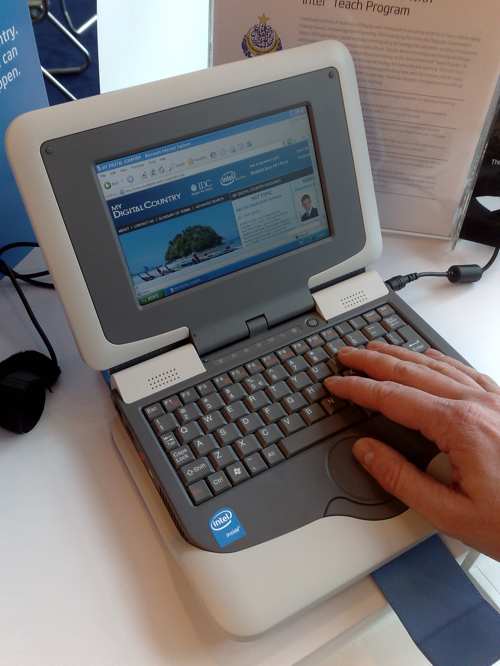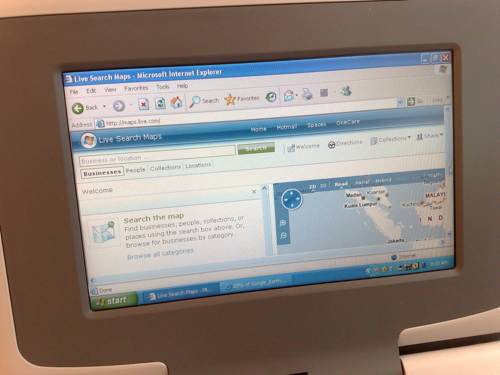Back in June I had a chance to play with the One Laptop Per Child (OLPC) computer, and used the opportunity to check out which mapping sites worked on its browser. (Google Maps and Yahoo Maps Classic worked, Microsoft Virtual Earth did not.)
In the past few months, Intel and Microsoft have been touting a competitor, the Classmate, which runs Windows XP. Intel and Microsoft, both big sponsors of Global Knowledge 3 here in Kuala Lumpur, were showing off Classmates. I got to play with one. I’m sure you’re dying to know — does it run Google Earth? Virtual Earth in 3D?

I like the look of the Classmate. It is small and feels rugged. Spec-wise, Classmate and OLPC are similar in terms of RAM and NAND flash storage, but the Classmate suffers from a really small screen — 800×480 pixels (color). OLPC gets 1200×900 pixels (color).
Because the Classmate runs Internet Explorer on Windows XP, all the mapping sites loaded, though in all cases, the small screen meant that the actual map area of the web page was miniscule.

I installed Google Earth — the process went without a hitch. How does it run? As expected, because classmate has no graphics card, frame rates were very low:
As for Microsoft’s Virtual Earth 3D, i never got the installation process to finish. Of course, it was very unfair of me to try this on a sub-$300 computer, but one can live in hope:-)
Which laptop will be more successful? I suspect that the developing world’s government education agencies will likely go for the Classmate because of the familiar Windows on it. Children, on the other hand, will care more about the cool screen. One BBC reporter who has been skeptical of the OLPC found that his kid loves the OLPC. Also, at half the price, you get more OLPCs than Classmates for your money, though you could also just wait 18 months for Moore’s Law to do its thing. In the end, it’s the OLPC that wins my heart, as it is such a radical departure from traditional laptops.